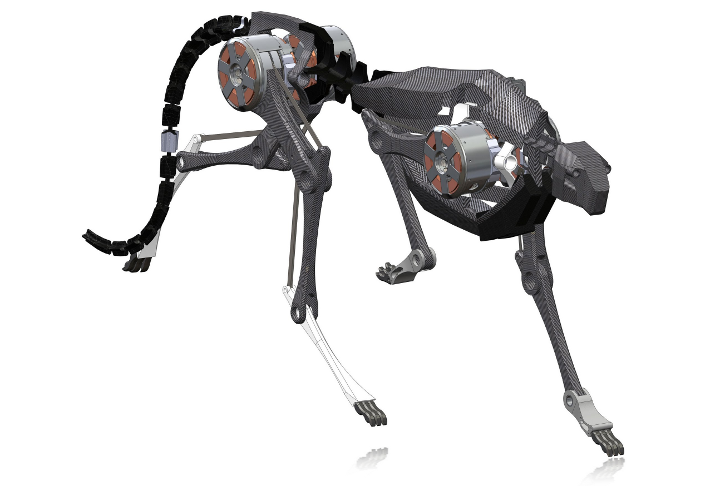MIT Robogepard is a competitor to Boston Dynamics Cheetah

Four-legged Boston Dynamics robots are not the only ones whose development will be funded by DARPA as part of the Maximum Mobility and Manipulation (M3) program. And although the cheetah built in the bionics laboratory of the Massachusetts Institute of Technology is still behind its more famous Boston counterpart in speed and autonomy, it is also very interesting. In addition, unlike Boston Dynamics, MIT publishes much more details about the design and development process of its robots.
The creators of the Massachusetts cheetah consider the energy efficiency of the robot as one of their main goals. The less energy a robot spends to move at a given speed, the more compact its power installation can be and the longer it can work autonomously. The mobility of the MIT cheetah, which uses an electric drive (unlike the Boston Dynamics robots, whose legs are hydraulically driven) is very close to that of a live cheetah and other similar land animals and is several times higher than Big Dog or the Honda ASIMO biped robot.
The effectiveness of the movement of animals is highly dependent on the environment in which they move. Waterfowl consume energy most of all. Behind them are flying animals, and the hardest animal to move around is the land animal. The comparative effectiveness of different types of animals, humans, some mechanisms and robots is clearly visible on this graph:

These results were achieved with the help of specially designed electric motors and a carefully thought-out foot design. The motors have a very large radius, due to which they develop much higher torque than any serial drives. Due to the low speed of such an engine, it became possible to use a simple single-stage gearbox. Low losses in the gearbox and low engine speeds allow energy to be effectively recovered - when the foot touches the ground with the foot, the electric motor serves as a shock absorber, but does not dissipate the shock energy in the form of heat, but returns it to the battery.
The thigh and knee motors are located in the hip joint, making the cheetah leg very light in weight. They succeeded in additionally facilitating the construction using Kevlar “tendons”, which remove a noticeable part of the load from the “bones”. Another technique seen from nature is that the tail is actively used to maintain balance and faster and more precise maneuvers.
Now the project team has focused on improving electric motors. According to the director of the bionics laboratory, Professor Kim Sung Bae, with the new engines, the 30-pound cheetah MIT will be able to accelerate to 56 km / h, which is 10 km / h faster than the Boston cheetah record . And in terms of energy efficiency, it should overtake its natural prototype, approaching the performance of flying animals.
